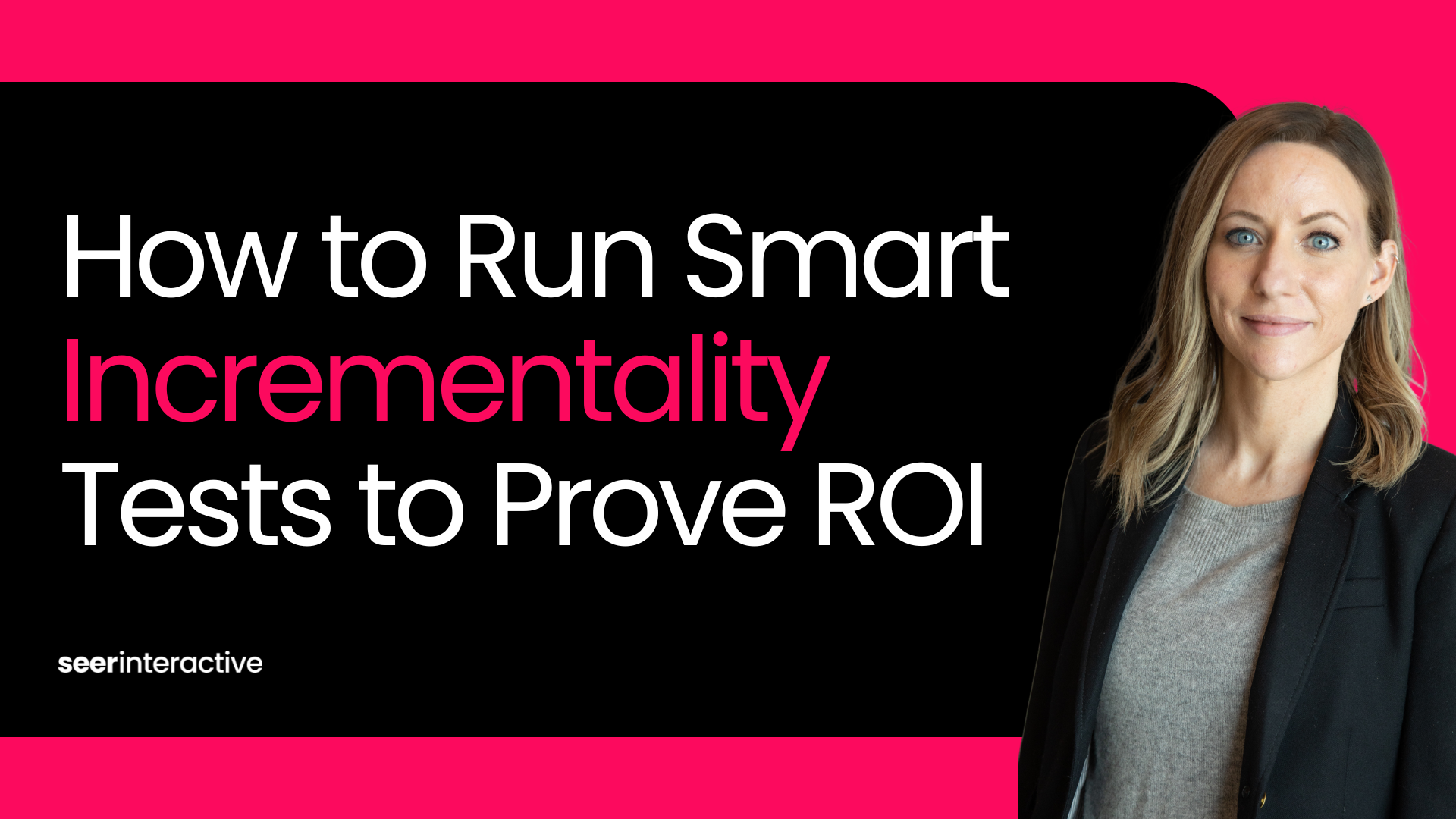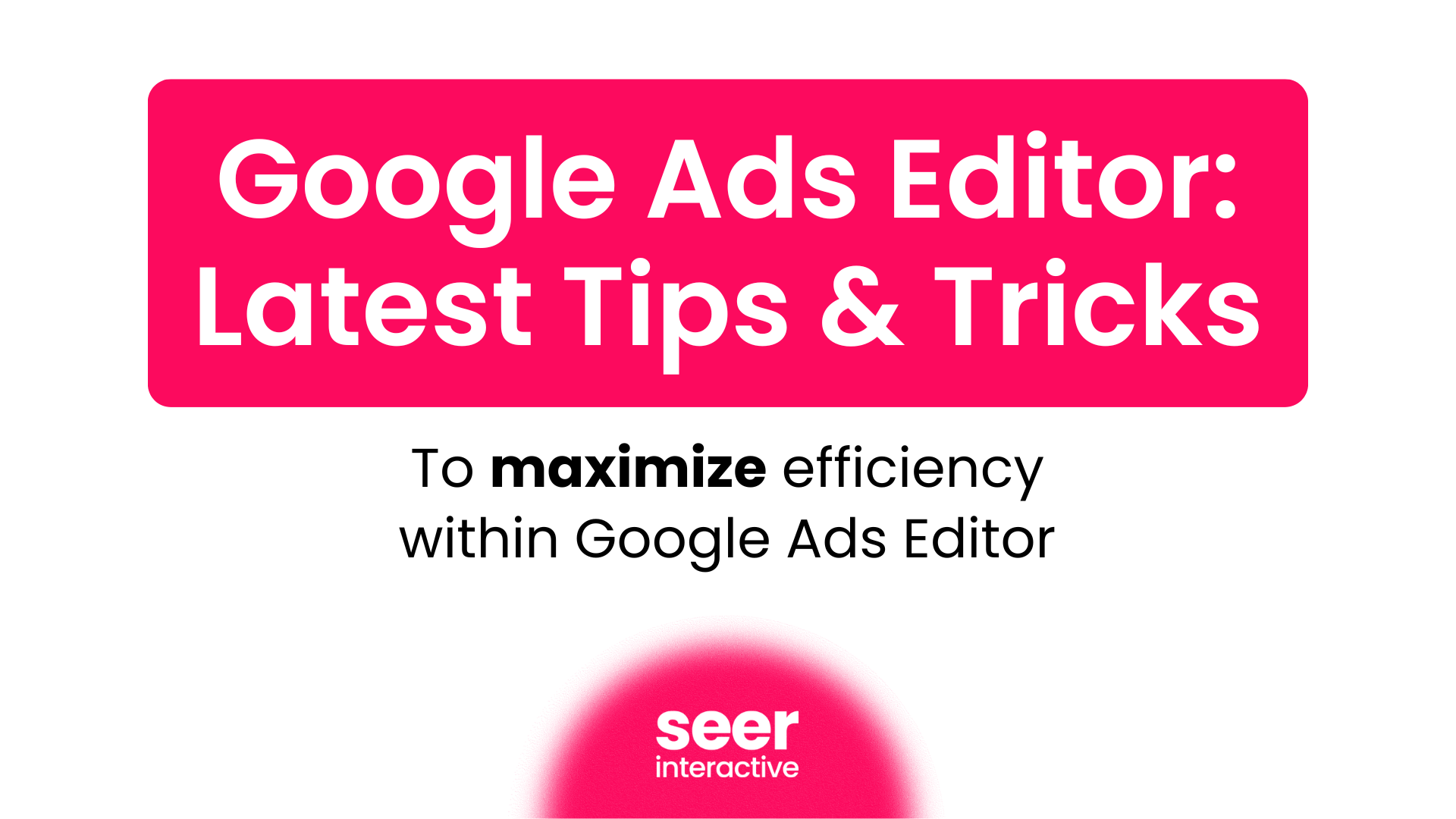The Pitfalls of Standard Keyword Coverage
According to Google, 15% of searches are brand new, every single day.
While broad match keywords cast a wide net and let us pick up some of the more unique, longer-tail, and close-variant searches, we still have to worry about creating relevant ad copy and expanding our keywords in some instances. Even if we have strong keyword coverage, we’re not guaranteed to show for every query that’s relevant to the content on our site.
Take the BMM keyword +lift +rental. While the relevant query spider lift rental can technically match to that keyword, our ad copy might not be relevant enough to enter us into the auction. We can create a separate ad group to capture spider lift searches and tailor the ad copy accordingly, but this ends up being a lift for the account manager, especially if this process is repeated across several campaigns. And let’s not forget that we might not even be showing up for spider lift queries due to low ad relevance and quality score -- we could be missing out on this relevant traffic altogether.
Let’s learn how Dynamic Search Ads can help.
What Are Dynamic Search Ads?
Dynamic Search Ads (DSAs) are an automated ad format that crawls your webpages and matches relevant queries to your site. Based on the query, Google dynamically generates headlines and directs the user to the most relevant landing page. This accomplishes a few things:
- Ad & Landing Page Relevance: Since Google dynamically generates the ad headlines and matches the query to your most relevant landing page, all of those elements will be in sync. Someone searching for spider lift rental will likely see that in Headline 1 or Headline 2, and they’ll be sent to a spider lift category page as long as that’s present on your site.
- Keyword Coverage: By crawling your webpages, Google fills in potential keyword gaps and allows you to show for relevant queries you may not be directly bidding on. Per Google, 85-90% of search terms targeted by DSAs are net new.
- Time Savings: No need to break out ad groups, do in-depth keyword research, or adjust ad copy and landing pages. DSA takes care of the heavy lifting, while still giving you the option to view search terms and break things out in the future if you want. If you’re using manual bidding, DSAs also allow you to scale keyword coverage without having to do more bidding work.

How Does Targeting Work for Dynamic Search Ads?
Advertisers have full control over what kinds of searches match to DSAs via Dynamic Ad Targets. Google lets you select individual pages, groups of pages, or even all pages on your site as targeting criteria. You can view ad previews from this view in the UI, too, if you want to see potential headlines.
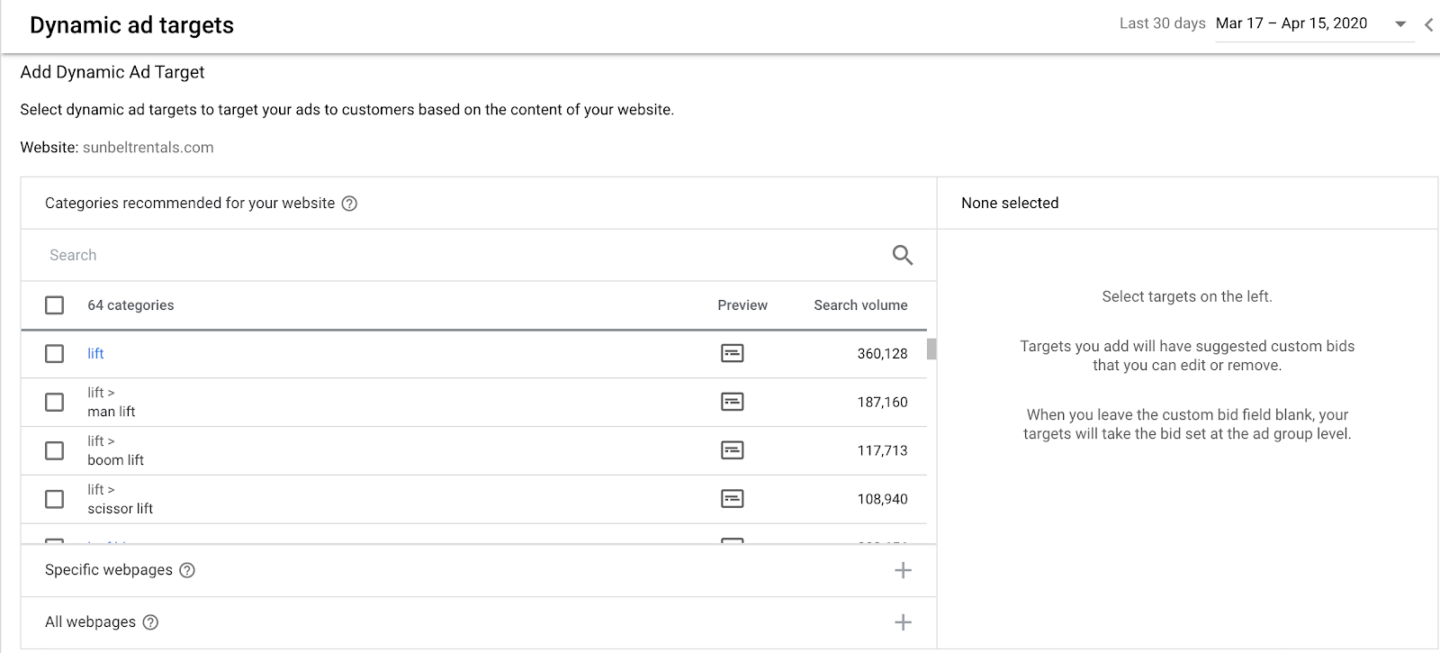
On the flipside, you can also exclude certain pages such as those that contain words like “sold out” or “out of stock,” or careers pages. Negative keywords also work for DSAs just as they do for standard Search campaigns or ad groups.
Scenario: You want to expand coverage for lawn mower terms in your Lawn Care Search campaign to pick up additional, relevant traffic as Springtime approaches. You’re currently bidding on BMM and Exact-match variants of lawn mowers, backyard lawn mowers, and ride-on lawn mowers, but want to show for other variations and specific models. You create a DSA ad group targeting URLs on your site that contain lawn-mower. This lets you show up for new queries like...
- Self-propelled lawn mower
- Gas lawn mowers
- Battery-powered lawn mowers
...while still showing relevant ad copy and sending users to the appropriate category pages. Win-win.
Dynamic and Custom Ad Copy
Google automatically generates Headlines, Display URL, and Final URL, while the advertiser manually inputs descriptions. Keep in mind that your description lines should still be as relevant as possible to the specific page or category page that you’re targeting.
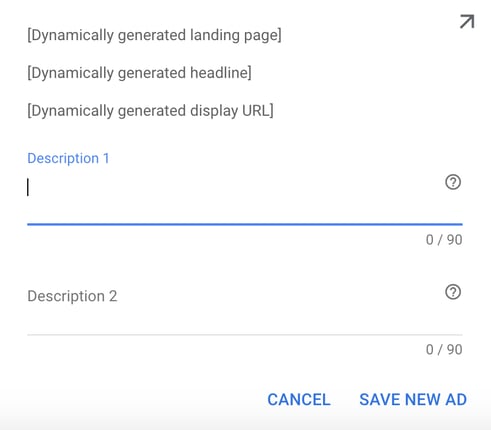
Wondering how headlines are populated? The most common signal used to generate the ad headline is the HTML Title of your page, and other commonly used phrases on the site are also taken into account.
Setting Bids for Dynamic Search Ads
Since DSAs use targets, there are no keyword-level bids required. If you’re using manual bidding, you can set bids at the ad group-level and optimize accordingly.
If you’re using Smart Bidding (which you should be!), that automated strategy will also apply to DSAs whether they live in a new or existing campaign.
How do Dynamic Search Ads Fit into Account Structure?
If you’re new to DSAs and looking to jump in quickly, consider creating a separate “catch-all” campaign that targets the landing pages you’re currently using in the account. This casts a wide net while keeping traffic relevant to what you’re already bidding on. You can give this campaign a separate budget or limit audience/geo targeting if need be.
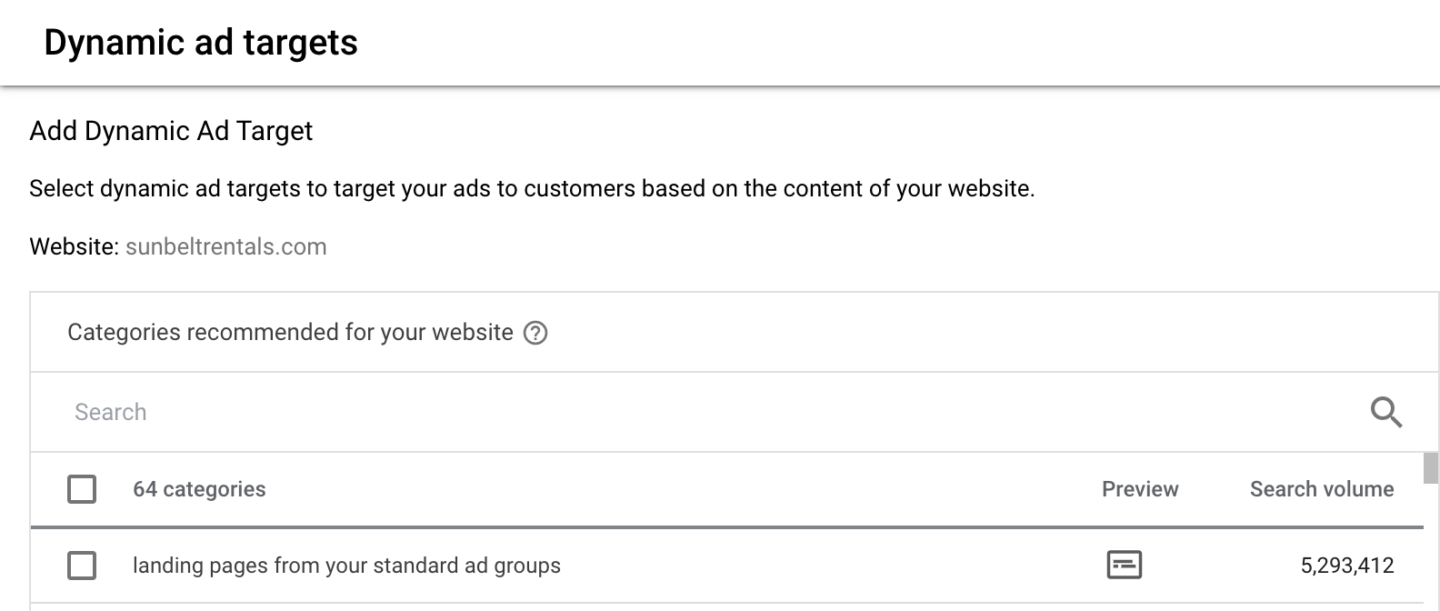
If you’re looking to expand coverage in a specific campaign and have well-organized website categories, consider creating Dynamic Ad Groups within existing campaigns. Select specific categories or use create Ad Targets based on certain words in the URL. Make sure that your daily budget is high enough to pick up the additional traffic, and keep ad group-level bids in mind if you’re using manual bidding.
Leverage Smart Bidding in campaigns that use DSAs and standard keyword targeting with Responsive Search Ads. This allows the algorithm to adjust bids for efficiency while ensuring max volume in the campaign. Learn more about account structure and Smart Bidding recommendations here!
What About Keyword Overlap?
If you’re worried about potential overlap between Dynamic Search Ads and existing keywords, you have a couple of options.
Option 1. Negate existing keywords from DSA campaigns or ad groups: If you want to guarantee that DSA traffic is incremental, you can do this. However, this prevents Google from showing the user the best possible ad based on expected performance.
Option 2. Accept Ad Rank implications across Search and DSA: Even though Dynamic Search Ads don’t use keywords, quality score and bid are still used to determine Ad Rank. If there’s potential overlap between DSA and existing keywords, Google will determine which ad to show based on those usual factors. There are some nuances, though:
- Exact match keywords tend to take priority over Dynamic Ad Targets if both are eligible to serve.
- The more specific Dynamic Ad Target will serve if two targets are eligible (i.e. Lawn Mowers category and URL containing gas-lawn-mowers).
Check out how we’re using some of Google’s traditional Quality Score elements to improve SEO performance here!
Setting Up Dynamic Search Ads in Google
Google Ads UI
To add a Dynamic Ad Group in Google Ads, create a new one and select Dynamic as the type.
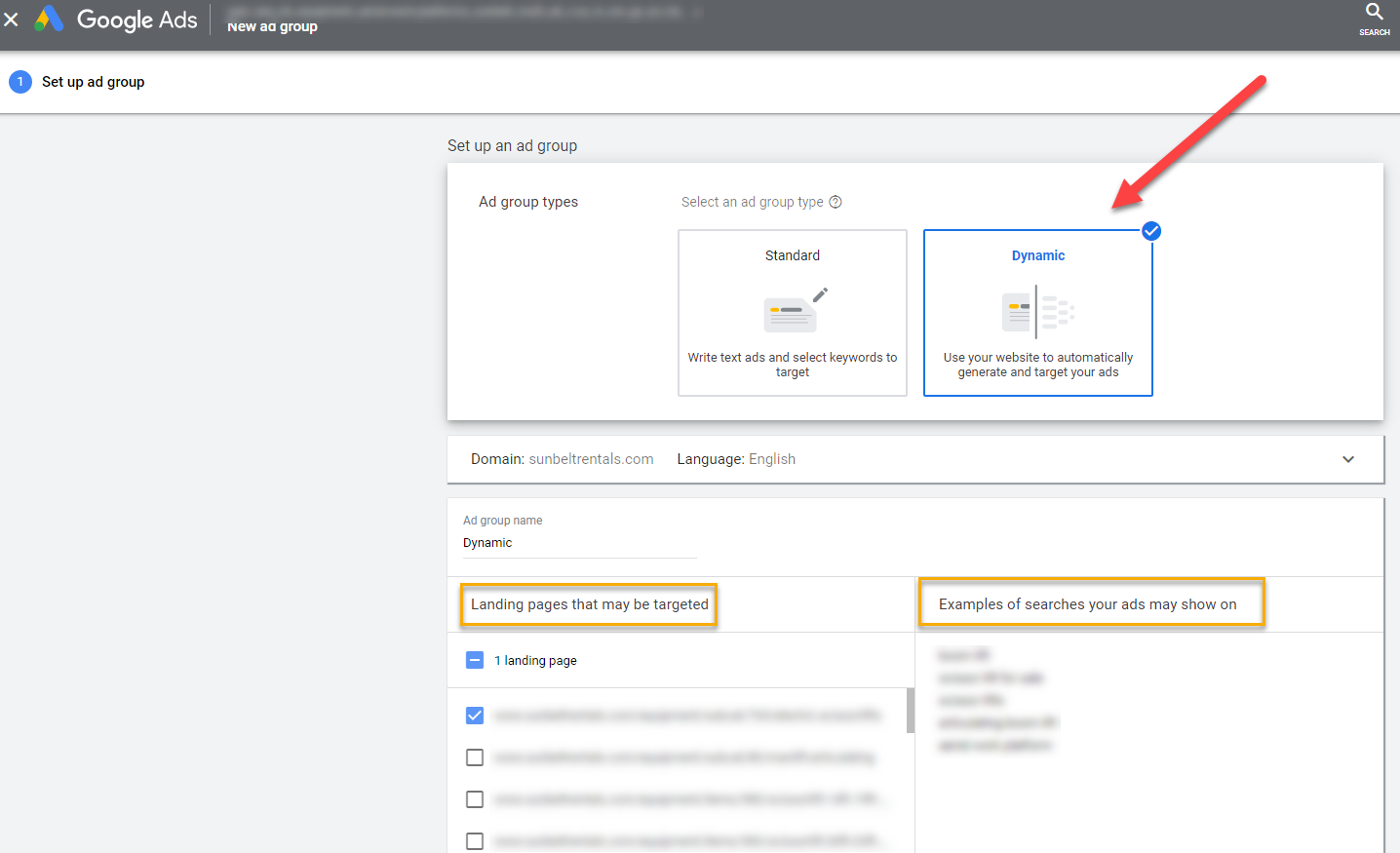
You’ll be able to choose specific landing pages, categories, or feeds as Ad Targets, and Google will show you what kinds of searches may match to the Dynamic Ad Group.
Ad creation is right below the Ad Targets section. If you have webpages or categories selected, Google should display some example ad copy. You can see how this looks with manual description lines, too.
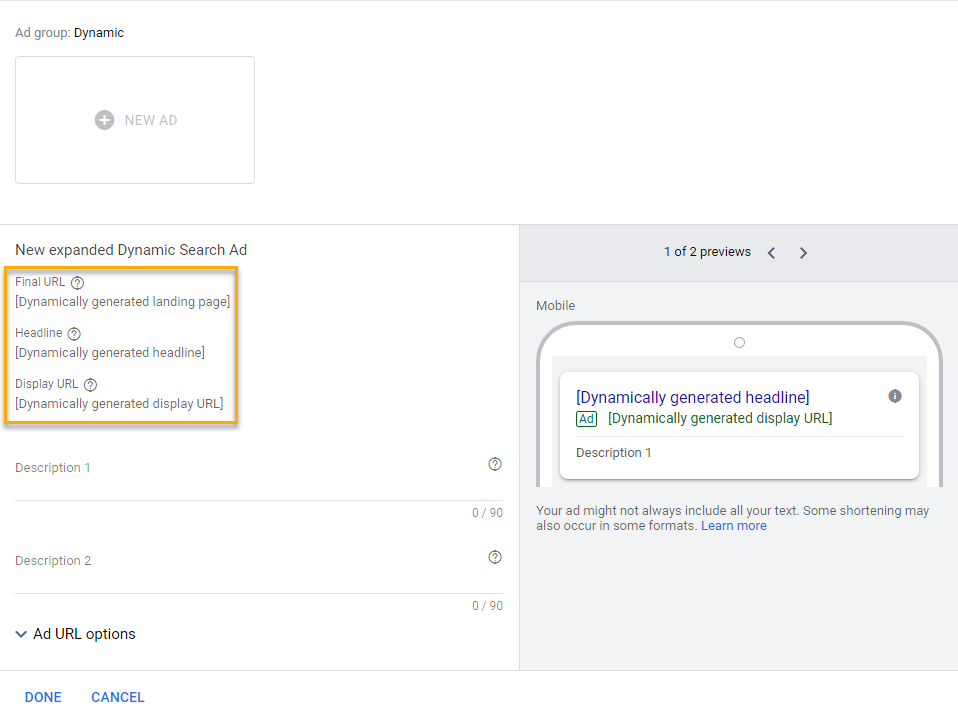
Hit “Done” and save your Ad Group, then you’re all set!
Google Ads Editor
If you’re making changes across multiple campaigns in bulk, Google Ads Editor can speed things up. Create a new Ad Group, change the type to Dynamic, then add your targets.

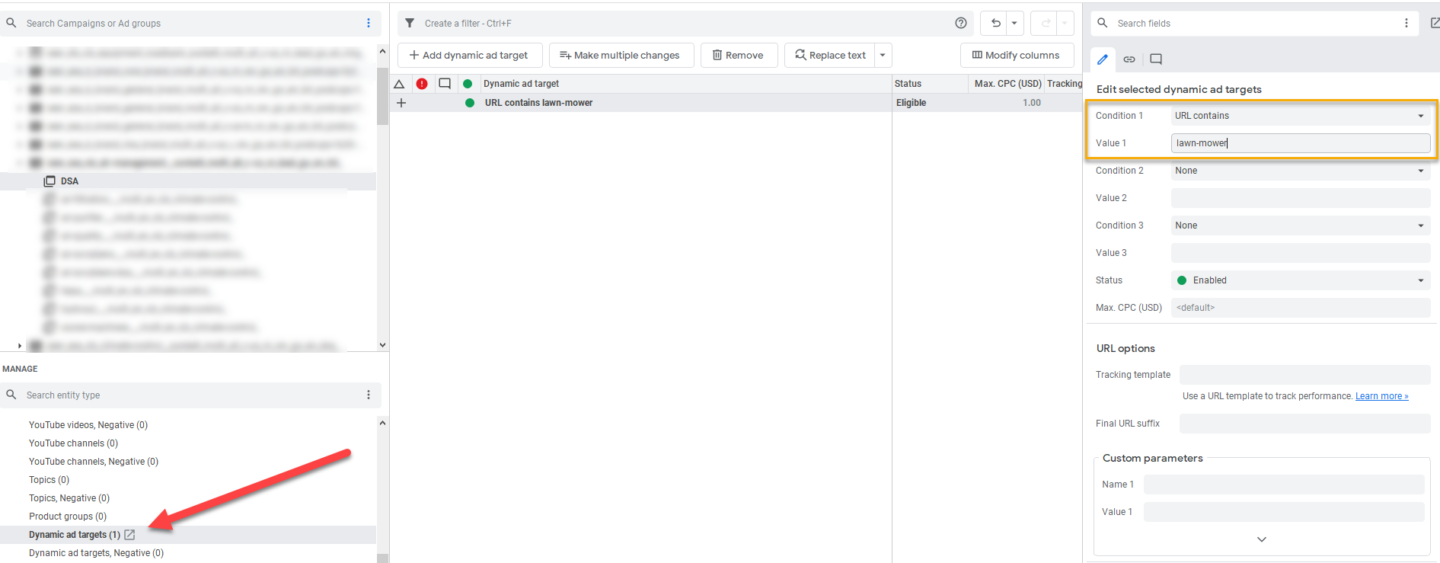
You can create Expanded Dynamic Search Ads in the “Ads” section just like you would with other formats.
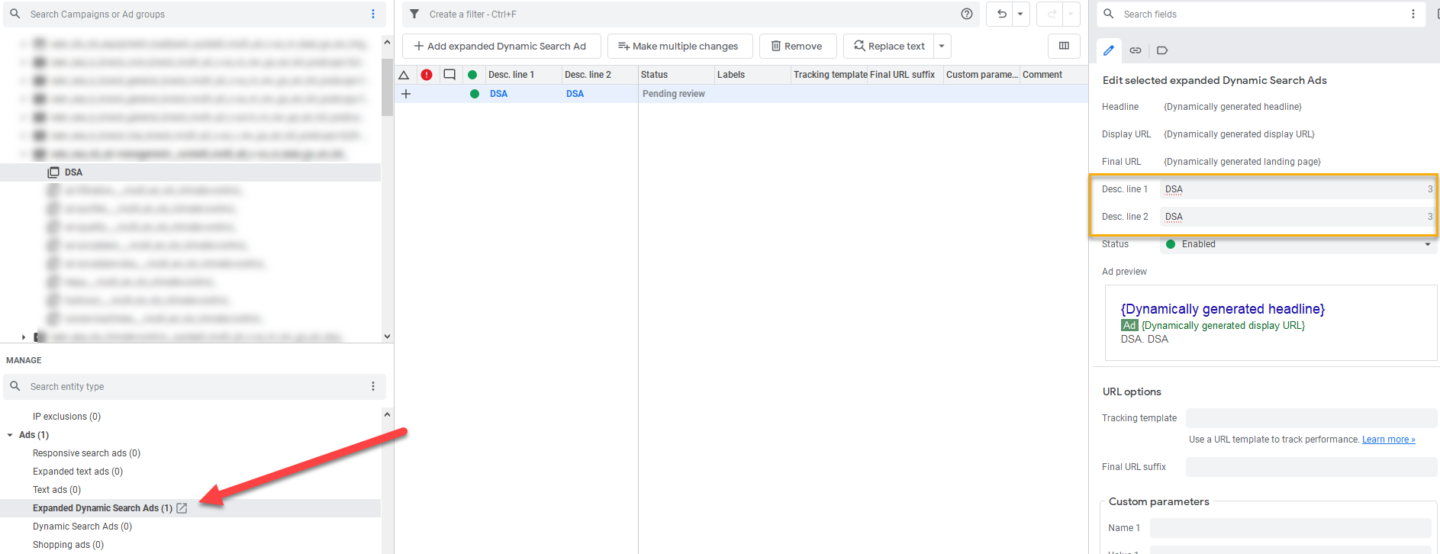
Monitoring and Optimizing Dynamic Search Ads
While Dynamic Search Ads -- and automation, in general -- save us time and add value, we still need to guide the machine and monitor accordingly.
Search Terms
With DSAs, reviewing search queries is the most important optimization. Jump into the Search Terms Report in Google Ads every few days or once a week to review what your Dynamic campaigns or ad groups are bringing in. Most of this traffic is likely relevant, but some clutter might be coming through based on how your site is organized and how Google matches to certain queries.
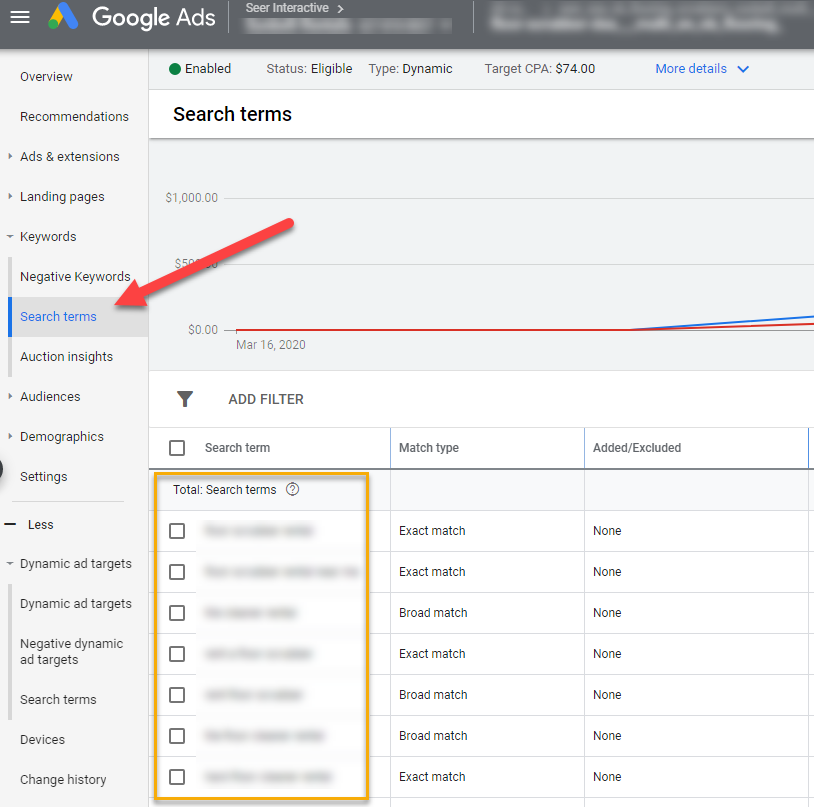
Viewing Ad Target Performance
Similar to how you would view keyword or Ad Group performance in a campaign, you can view the same data for Dynamic Targets. Change bids, pause targets, or adjust the targeting criteria.
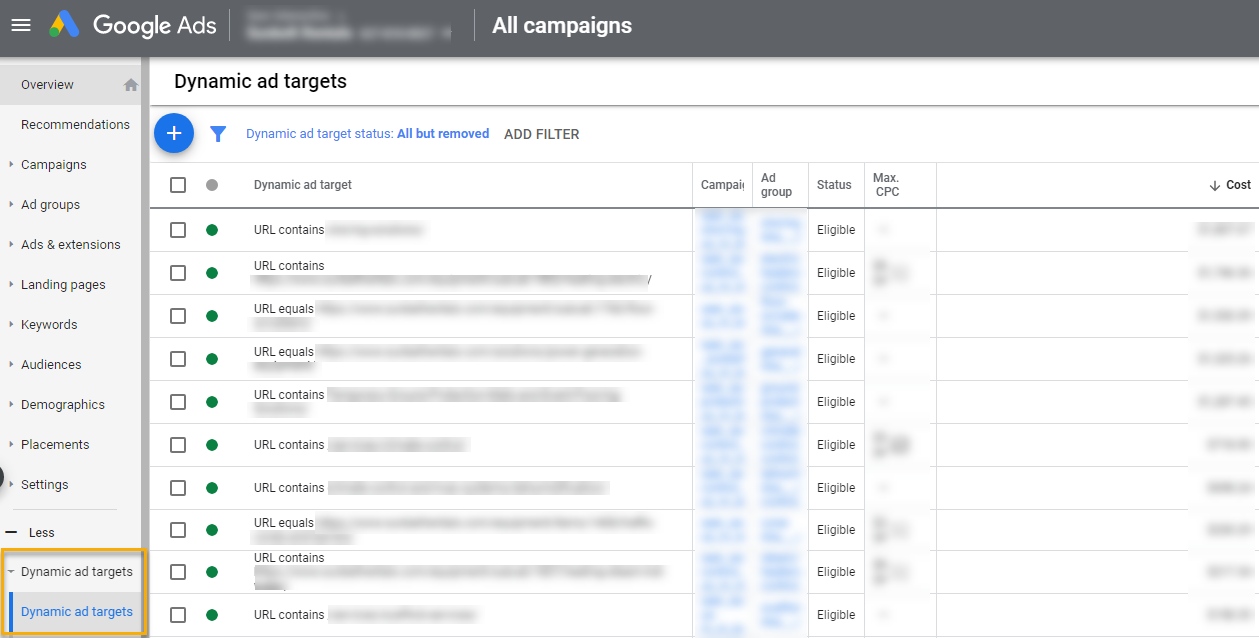
Automated Bidding
If you’re currently using manual bidding with Dynamic Search Ads, consider testing a Smart Bidding strategy to fully lean into automation and let Google do the work for you. DSA lets Google match the right ad copy and landing page to each individual query, and Smart Bidding will only enhance that by setting the right bid for those unique queries based on intent, device, browsing behavior, and hundreds of other signals.
Get Started with Dynamic Search Ads
Whether you’re looking to fill keyword gaps or save time as an account manager, DSAs let you accomplish both while enhancing automation and improving your optimization score. Figure out the best way to integrate these into your account based on goals, structure, and budget.
Not sure where to start? Let us know how we can help.

